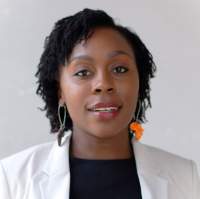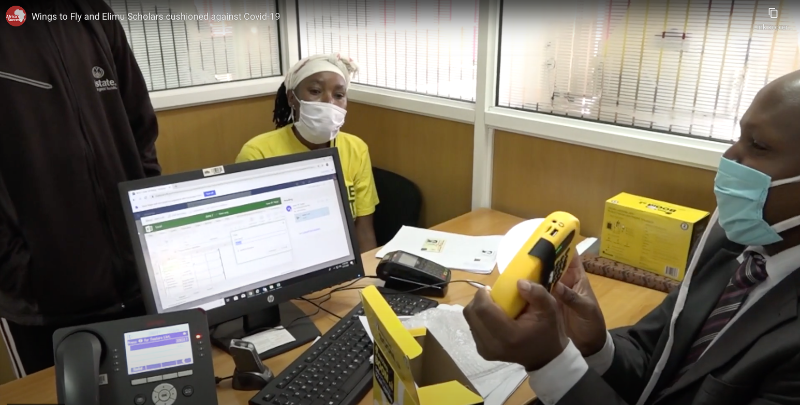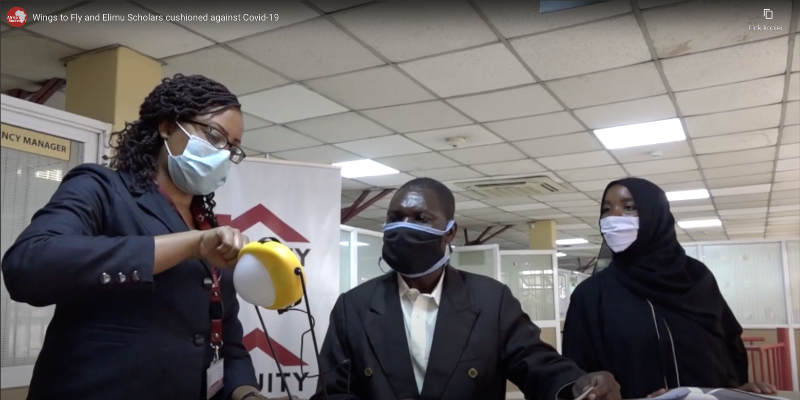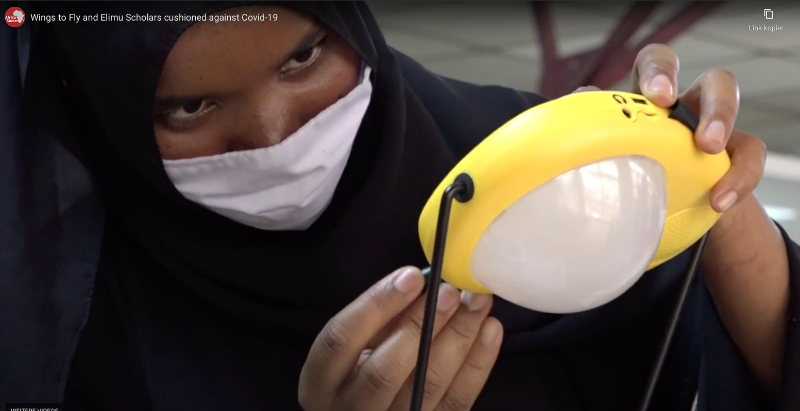- Equity, inclusion and sanitation workers
- Representation and equality in visual communication
- Images and representation - how can we avoid reproducing and affirming stereotypes in images?
Images and representation - how can we avoid reproducing and affirming stereotypes in images?
5199 views
- Chaiwe
-

- Moderator
- Innovation enthusiast and Knowledge Management Expert in WASH and Climate Change while cross-cutting Youth and Gender Issues. CEO of CaDev_Capacity Development (An African Social Enterprise)
Less- Posts: 336
- Karma: 8
- Likes received: 116
Re: Images and representation - how can we avoid reproducing and affirming stereotypes in images?
I agree 100% with you on this point here:
This one however is somewhat of a bitter pill:images produced by photographers from the Global South could make the difference in order to reduce stereotypes
It is bitter in the sense that, the main reason why the power scale is soo skewed (I feel), to begin with, is to do with the availability of financial resources and other resources and advancements within the Global North that developing countries do not have. It starts with bridging the resource gap.....but it needs also sensitivity in visual communication and power sharing by those who are in charge (I guess mostly people from the Global North).
Regards.
Chaiwe
Skat Foundation (With financial support by GIZ and SIRWASH up to November 2023)
Chaiwe Mushauko-Sanderse BSc. NRM, MPH
Independent consultant located in Lusaka, Zambia
Emails: This email address is being protected from spambots. You need JavaScript enabled to view it., This email address is being protected from spambots. You need JavaScript enabled to view it.
LinkedIn: www.linkedin.com/in/chaiwe-mushauko-sanderse-21709129/
Twitter: @ChaiweSanderse
Please Log in to join the conversation.
You need to login to reply- jasminalley
-
 Topic Author
Topic Author- I am an exhibition maker and passionate about changing museums into spaces that are diverse and free from discrimination.
Less- Posts: 5
- Likes received: 3
Re: Images and representation - how can we avoid reproducing and affirming stereotypes in images?
apologies for my late reply! I just saw your response. I think you are making a very important point and it is a question of power: who is able to shape the narratives in visual (and other) communication? I think it is a two way process: images produced by photographers from the Global South could make the difference in order to reduce stereotypes and dissolve this homogeneous image about the African continent, but it needs also sensitivity in visual communication and power sharing by those who are in charge (I guess mostly people from the Global North).
Best,
Jasmin
Please Log in to join the conversation.
You need to login to reply- Chaiwe
-

- Moderator
- Innovation enthusiast and Knowledge Management Expert in WASH and Climate Change while cross-cutting Youth and Gender Issues. CEO of CaDev_Capacity Development (An African Social Enterprise)
Less- Posts: 336
- Karma: 8
- Likes received: 116
Re: Images and representation - how can we avoid reproducing and affirming stereotypes in images?
Allow me to point you back to my question on Janice' post here: forum.susana.org/representation-and-visu...id-hierarchies#32915
Images often times tell the story the photographer wishes to tell. However, how do we ensure that in the end, we do not miss the full story? A perfect example is how western media oftentimes portrays 'Africa' or images of this very huge continent of 53 countries using a few images of wildlife, war, famine, vulnerable women and children... How can we begin to move away from these skewed narratives?Dear Janice,
Great pointers for photography in general. However, I would like to know what your thoughts about water and sanitation imagery are. A simple google search on water and sanitation images see here . The images instantly reveal the stereotypical vulnerability you speak about... Or does it portray the reality? When and how do we distinguish between these two realities?
Scrolling down the search thread you see mostly children (and women) of Asian or African origin. One wonders, does the photographer seek consent from guardians to capture these images of children? These images do not communicate the broader picture of what constitutes Water and Sanitation.
That said, I wonder what your impressions are and the impressions of other experts out there.
Regards,
Chaiwe
Chaiwe
Skat Foundation (With financial support by GIZ and SIRWASH up to November 2023)
Chaiwe Mushauko-Sanderse BSc. NRM, MPH
Independent consultant located in Lusaka, Zambia
Emails: This email address is being protected from spambots. You need JavaScript enabled to view it., This email address is being protected from spambots. You need JavaScript enabled to view it.
LinkedIn: www.linkedin.com/in/chaiwe-mushauko-sanderse-21709129/
Twitter: @ChaiweSanderse
Please Log in to join the conversation.
You need to login to reply- jasminalley
-
 Topic Author
Topic Author- I am an exhibition maker and passionate about changing museums into spaces that are diverse and free from discrimination.
Less- Posts: 5
- Likes received: 3
Re: Images and representation - how can we avoid reproducing and affirming stereotypes in images?
the images show people (man and woman) explaining how the yellow device works. The third picture shows a woman who engages with the device. From a visual communication perspective it is important to show people in an active position, especially women who explain something. That is why we chose these images as a positive example. I hope that answers your question. If not, please do not hesitate to get back.
Best,
Jasmin
Please Log in to join the conversation.
You need to login to reply- paresh
-

- Moderator
- Budding WASH researcher, especially interested in governance, public policy, finance, politics and social justice. Architect, Urban & Regional planner by training, Ex. C-WAS, India.I am a patient person :)
Less- Posts: 382
- Karma: 7
- Likes received: 142
Re: Images and representation - how can we avoid reproducing and affirming stereotypes in images?
Thank you for initiating this very important discussion. I'd also like to highlight this earlier related discussion: The subtle power of images - reinforcing stereotypes without even planning to...
Could you please explain the content of the images a bit more; I can't make out what are the people involved trying to do and how they are not portraying stereotypical roles.
Thanks
paresh
Moderator, SuSanA forum
Project Manager at ADCPS
Indian Institute of Technology - Bombay, India
Please Log in to join the conversation.
You need to login to reply- jasminalley
-
 Topic Author
Topic Author- I am an exhibition maker and passionate about changing museums into spaces that are diverse and free from discrimination.
Less- Posts: 5
- Likes received: 3
Images and representation - how can we avoid reproducing and affirming stereotypes in images?
Images are very powerful and shape a large part of our perception of reality. That is why it is important to make sure that they do not reinforce stereotypes as they can harm and stigmatize people. But how can we avoid reproducing and affirming stereotypes in images and establish a respectful visual communication at eye level instead?
We would like to share some images to discuss different aspects for a mindful visual communication. We would like to start with the issue of representation, which ties back to Janice’s last post that was among other things about diversity
[here are short reminder: Diversity goes beyond culture and race, it includes a range of other aspects such as Race and culture, but also age, ethnicity, gender, physical qualities and sexual orientation. As well as income, education, religion, geographic location, parental status and marital status.]
Every time we see ourselves reflected in media, in this case in an image, it also means we feel we are part of something, e.g. a company, a network, a national narrative, etc. and feel that we are represented, that we matter, that we are valued.
We think that the following images are good examples of diversity and representation because they do not depict children, women and men of color in stereotypical roles. www.dpdhl.com/en/sustainability/social/d...y-and-inclusion.html
What do you think? Please, share your thoughts with us!
Best,
Jasmin
[NB: Representation in images do not always fully correspond with the diversity of “real” life but if we acknowledge that images have a performative power, they can contribute to changes in representation of “real” life in the future. ( en.wikipedia.org/wiki/Performativity ).]
[Source of the images: // equitygroupholdings.com]
Attachments:
-
 Bildschirm...7.21.png
(Filesize: 533KB)
Bildschirm...7.21.png
(Filesize: 533KB)
-
 Bildschirm...0.10.png
(Filesize: 472KB)
Bildschirm...0.10.png
(Filesize: 472KB)
-
 Bildschirm...2.01.png
(Filesize: 389KB)
Bildschirm...2.01.png
(Filesize: 389KB)
Please Log in to join the conversation.
You need to login to reply- Equity, inclusion and sanitation workers
- Representation and equality in visual communication
- Images and representation - how can we avoid reproducing and affirming stereotypes in images?







